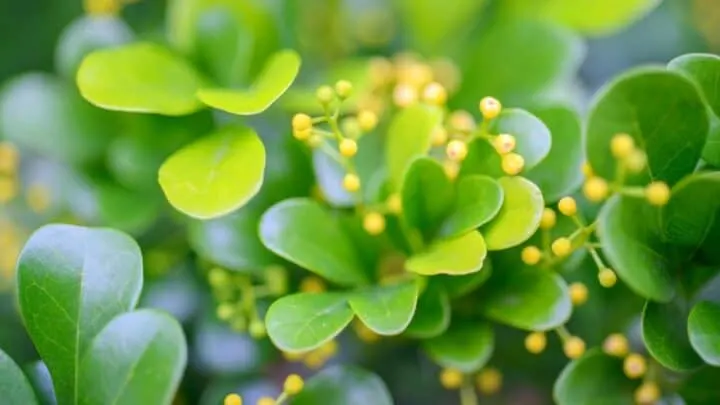Flowering tropical plants, such as the Chinese Perfume plant (Aglaia odorata) are a favorite for lots of houseplant enthusiasts.
You may have also heard of them be called the Chinese Rice Flower, or the Mock Lemon plant.
These ornamentals belong to the Mahogany family or Meliaceae according to Purdue University, which is comprised of both evergreen shrubs and small trees. These individuals can be found within the regions such as Southeastern China, Indonesia, Thailand, and Vietnam.
The look of a Chinese Perfume plant is an individual bearing yellow to green leaves with a spray of petite yellow flowers during the right season. An added bonus is that they have a very sweet aroma that takes on a lemon hue.
Chinese Perfume Plant Care
To care for a Chinese Perfume plant provide it with well-draining soil and brigh direct light. Water every 7-10 days once the top 2” of soil are dry (5cm) and provide a temperature between 60-80 degrees Fahrenheit (15-27 degrees Celsius). Provide around 50% humidity and fertilize once a month in spring and summer using a balanced fertilizer at 1/2 the recommended strenght.

Chinese Perfume Plant Care
Table of Contents
Chinese Perfume Plant Care Guide
Keeping a tropical plant happy can sound quite daunting. They have specific needs that are somewhat more extensive than your average houseplant.
Thankfully, the Chinese Perfume plant is rather forgiving and is a great beginner plant. We hope that you read on and use this detailed guide to provide your Mock Lemon with the best care!
Soil
A Chinese Perfume plant needs loose well-draining soil that stays on the drier side. A pH level between 6.1-7.5 is ideal.
One of the most important factors to consider when it comes to the soil type of a Chinese Perfume plant is that it should be able to drain properly.
If the soil holds on to an excess amount of water, it could potentially cause harm later on. They also prefer that their soil be kept fairly dry.
The pH of a Chinese Perfume tree’s soil should sit between 6.1 and 7.5 for the best results. We personally recommend that you use Cactus mix as the pots substrate.
Light
The Chinese Perfume plant prefers bright direct light.
The Chinese Perfume plant is actually classified as a small tree or shrub, meaning that they rely upon plenty of light in order to thrive. You can choose to place this individual in your backyard, but they should do just fine inside the home as long as they have ample lighting!
Mock Lemon plants will be happy enough when placed in a spot that has either partial or full sun. South-facing windows offer a steady stream of sunlight that is quite powerful and direct.
If this isn’t an option, consider using artificial lights to meet this need.
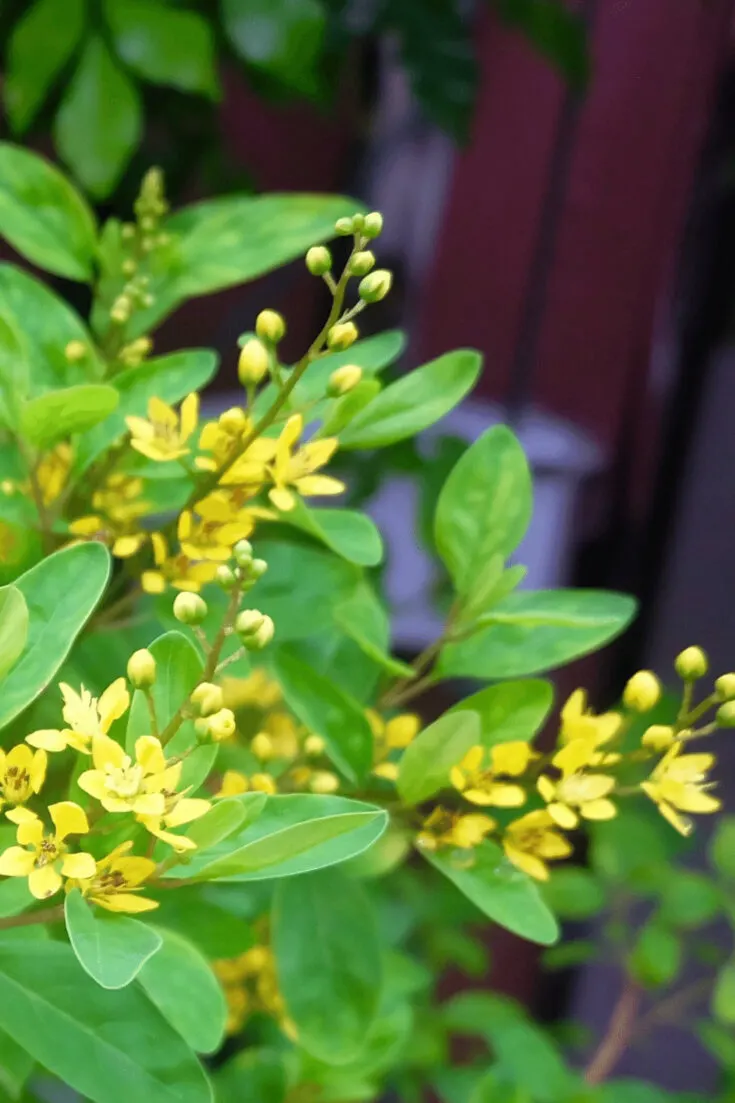
The best light for a Chinese Perfume Plant is bright direct light
Watering
Water Chinese Perfume plant every 7-10 days once the top 2” of soil dry out (5cm).
We touched on the fact that the Chinese Perfume plant prefers soil that remains relatively dry, but what does that mean for supplying water? The simple fact of the matter is that tropical plants, as a whole, need lots of moisture to stay happy.
Allowing the soil to dry out completely before watering your flora is a must but the general rule of thumb is that they should be watered every seven to ten days. You can also place holes onto the bottom of the container to ensure that the roots do not become waterlogged.
Temperature
The ideal temperature for the Chinese Perfume plant is between 60-80 degrees Fahrenheit (15-27 degrees Celsius). It is hardy down to USDA Zone 10-11.
The Chinese Perfume tree can withstand a wider range of temperatures than one would think. Given their natural habitat, you’d expect them to prefer warmer conditions.
They’re actually quite hardy! The room that houses your Aglaia should be around 60 degrees Fahrenheit) (15 degrees Celsius )but these plants can withstand short periods where the temperature dips to 35 degrees Fahrenheit (2 degrees Celsius).
because they can tolerate such conditions doesn’t mean that they should.
An indoor Chinese Perfume plant should not be exposed to anything below 50 degrees Fahrenheit (10 degrees Fahrenheit).
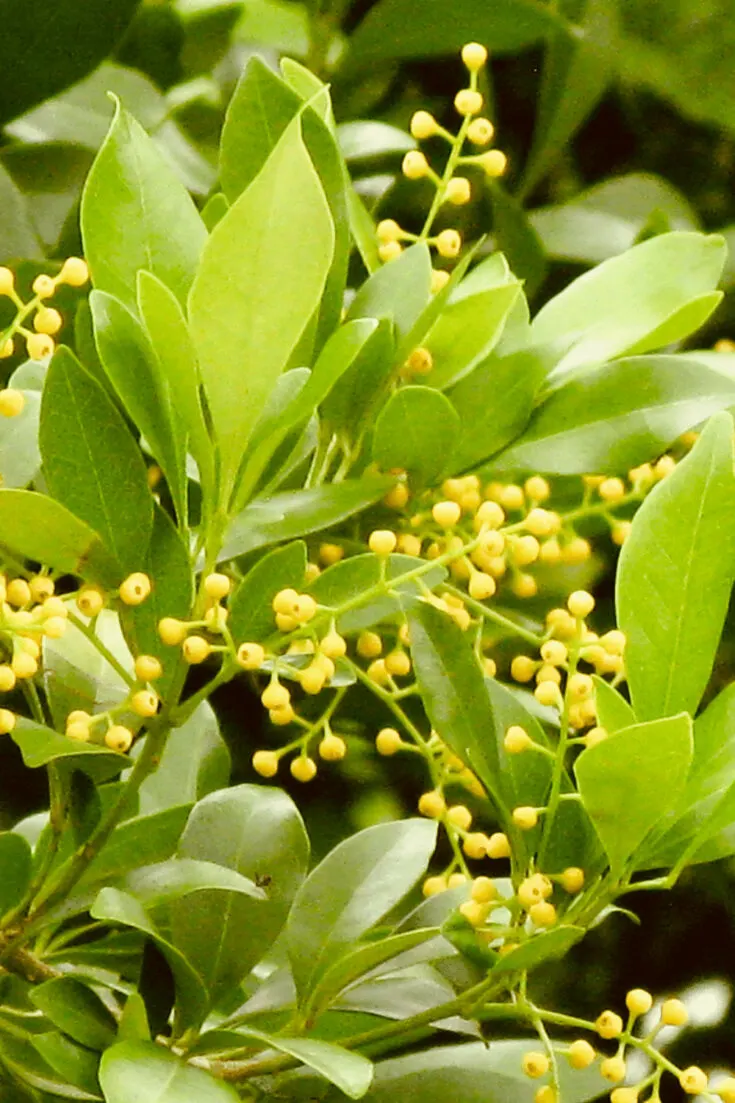
The ideal temperature for a Chinese Perfume Plant is 60-80 degrees Fahrenheit (15-27 degrees Celsius)
Humidity
The ideal humidity for a Chinese Perfume plant is 50% or more. However they will tolerate lower humidity levels around 40%.
Humidity is among the most important aspects when it comes to the care of any tropical species. Surprisingly, the Chinese Perfume tree can survive even when humidity levels are low. Just as with light, they’re more adaptable than the typical forest dweller.
If given the option, these plants would rather be given plenty of moisture.
Spraying your plant with water to increase the humidity should be done carefully, as simply watering the leaves from the top down can alter the physical appearance of your Chinese Perfume tree’s leaves. The best strategy would be to use a mister.
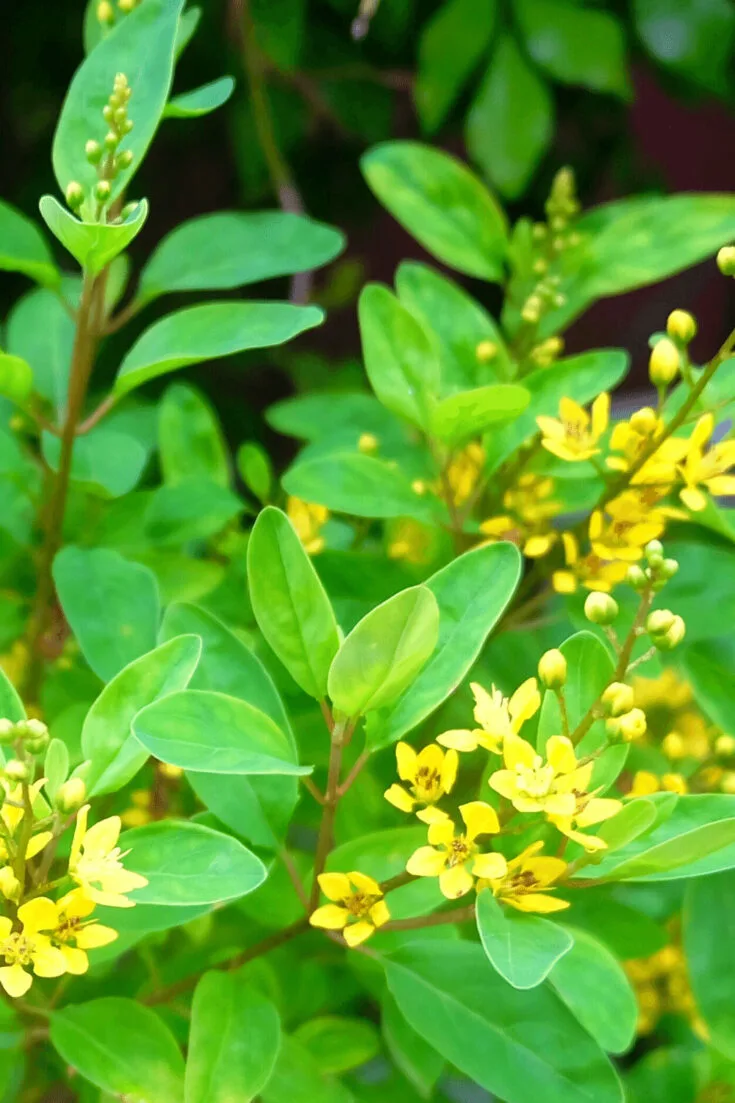
Provide around 50% humidity for a Chinese Perfume Plant
Fertilizer
Fertilize the Chinese Perfume plant once a month with a balanced fertilizer at 1/2 the recommended strenght in spring and summer.
If you want to see those small yellow flowers bloom, you’ll need to supplement your Chinese Perfume tree with a consistent fertilizer schedule.
The amount of water used on this species depletes their nutrient intake since they get drained with watering.
Using fertilizer every month, especially during the growing season, can have quite the impact. Be sure to choose a fertilizer that is water-soluble and designed for houseplants.
You’ll also want to dilute it to about half of its intended strength to avoid poisoning your Chinese Perfume plant.
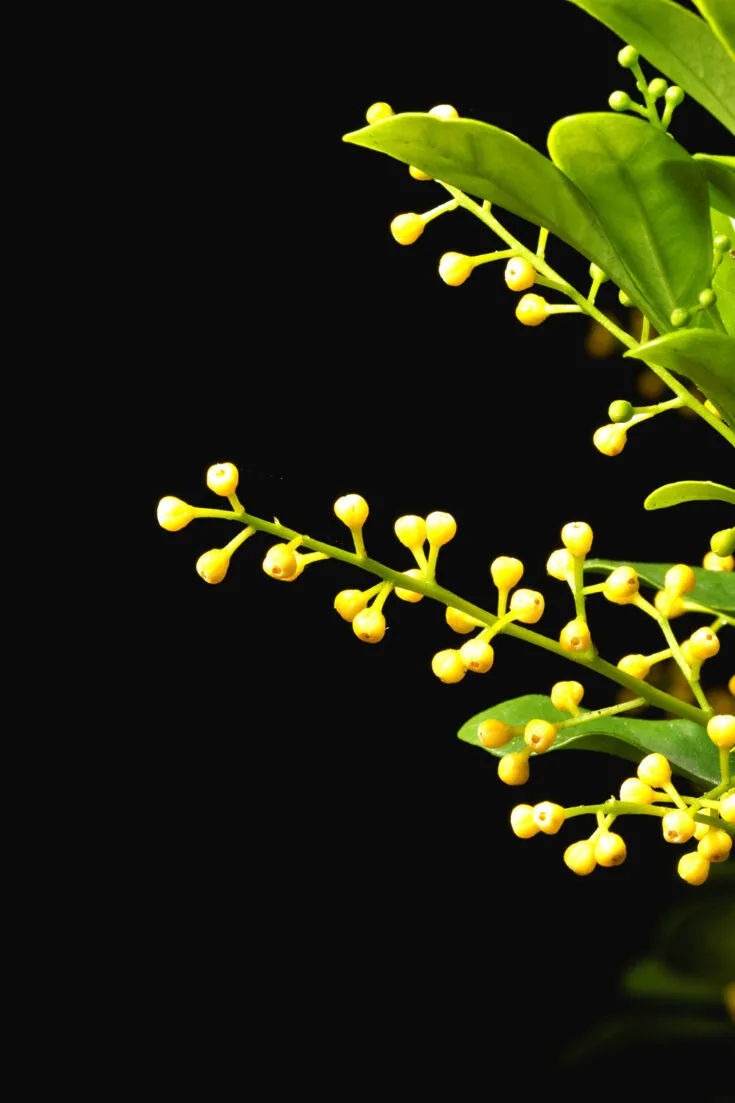
Fertilize the Chinese Perfume Plant once a month in spring and summer
Propagation
The two most common methods of propagation for a Chinese Perfume plant are through root cuttings and air layering. Out of these techniques, air layering tends to be more successful.
Some even opt to use a rooting hormone to give them an extra aid. Air layering involves taking a stem from the parent plant and trying to get it to grow it’s own roots.
It can be a slower process, but gets the job done! If you’re curious about the steps involved, we’ll discuss them in a later section.
Growth
In general, the Chinese Perfume plant take on the shape of a small tree or even a medium-sized shrub. Individuals kept inside do not typically extend past 4 feet (1.2m) , while their freely growing counterparts reach around 10 feet.
In nature the Aglaia odorata can reach 8-10 feet in height and width according to Missouri Botanical Garden (2.5-3m).
Although easy to grow, these plants don’t have the quickest growth rate. The speed at which they develop and mature depends on the care that they are given, especially in regards to moisture, through watering and misting.
Potting
You should aim to repot your Chinese Perfume tree every two years or so. This will ensure that the root system becomes not too compact.
Making sure that your Mock Lemon has the proper container is pivotal in keeping them happy. Without being repotted on a regular basis, this species will quickly outgrow its living space, further stunting any potential growth.
The entire plant should be removed during this process, including the soil so that you can separate the bottom half of the root mass out from the parent plant before packing fresh soil around what’s left.
Chinese Perfume Plant Propagation Steps
As we mentioned earlier, there are two ways that you can go about propagating your Aglaia species. You could either tackle this process through root cuttings or air layering.
Given the fact that Chinese Perfume trees aren’t all that easy to root, we suggest using the air layering method.
The following section is devoted to providing you with a step-by-step guide to follow for propagating your Mock Lemon.
The first thing that should be done is to choose which plant you want to propagate. The right specimen should be at least a year old with healthy growth and blooms. Another step that some often forget about is to soak moss in water, squeezing any excess water out before use.
The next step is to make an incision along a healthy branch, roughly around two-thirds down the stem.
The cut should be slanted upwards and not deep enough to go through the entire branch. Once completed, use a small plastic piece and wedge it inside the cut to prevent it from closing over itself.
Now take your dampened moss and fully wrap it around the incision that you just made, plastic piece and all. Don’t compact it down too much. Place plastic foil around the balled up moss and tie it off at the base. You may need to also tie the branch back to a stake for added support.
Check back on your plant every few weeks. When roots start growing through the moss, plastic encasing and cut the branch right below the incision spot, this time through the stem.
Consistently water your developing Chinese Perfume plant and transfer to a larger pot once fully matured.
Three Common Problems Found With the Chinese Perfume Tree
As easy as it is care for own Chinese Perfume plant, there can be problems that present themselves along the way. We’ve found the most recurrent issues that most Aglaia owners deal with, as well as some solutions!
Wilting
If a plant begins to wilt, it is generally because of a lack of water or too much heat. Taking the care requirements of this species into consideration, it’s more likely that your plant needs additional moisture.
Also be mindful that flora that is exposed to too much direct sunlight may also display this behavior.
We suggest that you add more water before changing the location of your potted plant. Increase your watering schedule, but make sure that the soil has enough time to dry out before adding more water.
If this doesn’t help after a few weeks, try switching the location to a spot that not directly in the windowsill.
Yellowing Leaves
Foliage that takes on a yellow hue is most likely due to an insufficient amount of water. This can go in either direction, with there being too much moisture or not enough. With a Chinese Perfume plant, you’ll likely need to add more water.
The best way to go about testing which problem you have is to check the soil. If it is extremely dry, add enough water to adequately saturate the entire pot and continue keeping an eye on it.
If the soil is soggy, you should leave it be for a few days and allow the substrate to dry out before watering again. Soil that does not dry out after a week should be changed out completely. This will prevent your plant from getting root rot.
Lack of Blooms
There are a number of reasons as to why your plant may not be producing those lemon-scented flowers. The most common deficiency is not being given enough water or fertilizer.
It can be a bit tricky to get flowers from your Chinese Perfume plant to bloom, but with the proper fertilizer schedule, it should be fairly simple. Make sure that this solution is diluted to half of its strength and that you do not add it more than once a month.
5 Tips for a Happy Chinese Perfume Plant
Taking care of a Chinese Perfume plant isn’t all that challenging once one understands their preferences. Need a summary of that checklist? We got it!
- Place your plant in soil that can drain properly and allow it to dry out before watering, which should be every seven to ten days.
- Potted plants should be in a spot that gets plenty of sunlight.
- Keep the temperature between 10 and 15 degrees Celsius.
- Add a water-soluble fertilizer in the growing season every month.
- Although not critical, they do prefer to be regularly misted!
Frequently Asked Questions About a Chinese Perfume Plant
Are Chinese Perfume plants toxic to cats and other pets?
The leaves of a Chinese Perfume tree have been described as natural pest repellants. Due to these properties, a pet or child should not consume them. Doing so may lead to intestinal issues, or worse depending on how much was eaten.
Why is my Chinese Perfume plant dropping its leaves?
The falling off of leaves for this species is a clear indicator that they aren’t getting enough water. We suggest first increasing the number of times that you mist your plant before adding more water. Checking the soil is a great way to tell if they should have this need met.
How did the Chinese Perfume plant get its name?
As one would expect, the Chinese Perfume plant got its common name for the sweet lemony fragrance that takes place along the leaves and bloomed flowers. This also alludes to the reason why they’re known as the Mock Lemon plant.
Conclusion About Chinese Perfume Plant Care
The Chinese Perfume tree is a fun plant to have within your collection of houseplants. They sport beautiful, small yellow flowers when in bloom, add a vibrant green hue, and even smell good! And better yet, taking care of them is rather straightforward.
The most important factors when it comes to the care of this species is that they get plenty of moisture, light, and fertilizer supplement. With those needs met, you’ll have a fragrant tropical addition to your home!

Daniel has been a plant enthusiast for over 20 years. He owns hundreds of houseplants and prepares for the chili growing seasons yearly with great anticipation. His favorite plants are plant species in the Araceae family, such as Monstera, Philodendron, and Anthurium. He also loves gardening and is growing hot peppers, tomatoes, and many more vegetables.

